Listen to this story here:
The Peristyle steps at Los Angeles Memorial Coliseum have stood witness to immense history. National Championships, Heisman winners, All-Americans, iconic matchups. Football is inarguably USC’s biggest sport, and the venue matches the legacy.
This same connection exists at the Galen Center, as storied volleyball and basketball programs compete in a 10,000-seat stadium with state-of-the-art weight rooms and vast practice courts.
Both of the arenas exemplify the deep tradition of USC athletics and the university’s commitment to facilities that support excellence and achievement.
But for two of USC’s sports, a disconnect between their accomplishments and their venue still exists. Women’s soccer and lacrosse aren’t unfamiliar with success in recent years. Soccer boasts two national championships in the 21st century, and lacrosse is fresh off of a Pac-12 Championship in 2023. But their home doesn’t live up to the excellence it hosts.
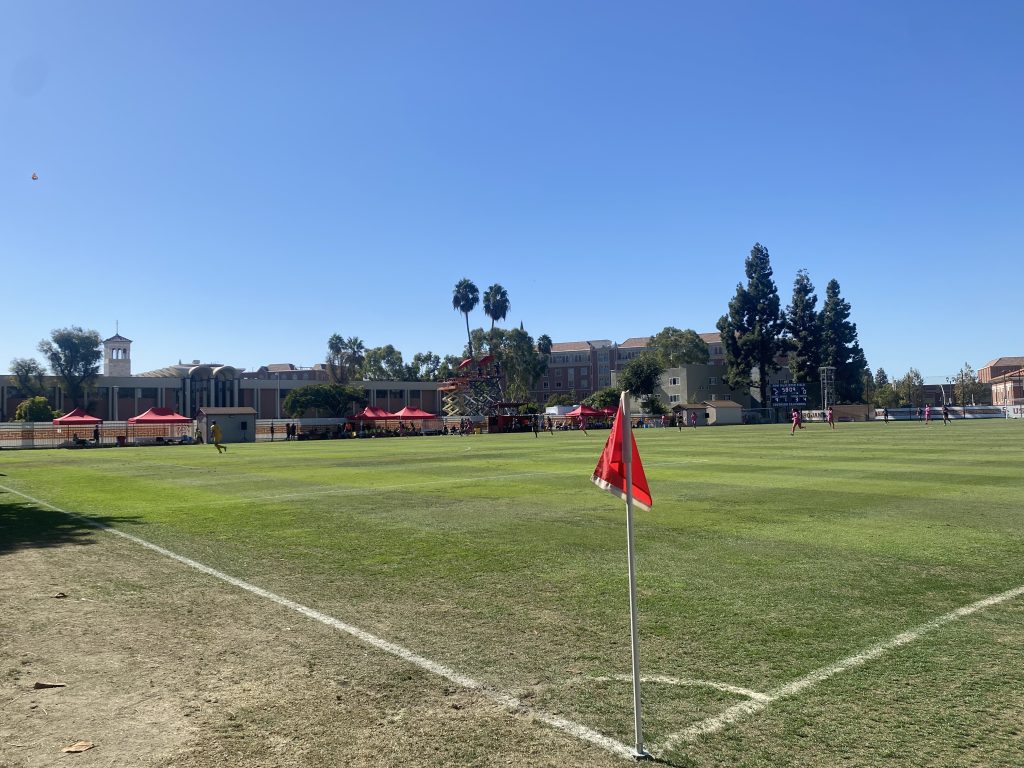
Soni McAlister Field sits just north of USC’s University Park Campus, sandwiched between a fire station and Troy Hall, one of the university’s off-campus housing facilities. To the north is 30th Street and just south is the parking lot for the Hebrew Union College. It’s a packed, cityscape location to begin with.
Stepping through the fences and onto the pitch, there’s little room for anything else aside from the field. Bleachers line the north side of the field, providing seating for a maximum of about 1,000 fans. A wooden press box sits on the south end. Tents are set up outside the fences in the parking lot of the Hebrew Union College for the away teams as a makeshift locker room.
That is set to change. Rawlinson Stadium, a project in part financed by a $10 million donation from a USC alumnus, will be complete by 2025, per the university’s release. The 2,500-seat facility will include locker rooms, two stands for fans to watch from, an LED video board and more.
“It’s gonna be everything. It’s a great thing when you can practice and be in a stadium all your own … It’s a whole new feel when you’re practicing on your actual game field. Intensity is better, energy is better.”
— Women’s lacrosse player Asjia Roberson
The announcement was, of course, met with much enthusiasm from all around the USC community. No doubt a standout headline, the project is worth further examination. What difference does having a full-fledged stadium make? Why is this getting done now? And perhaps most intriguing, what is going to be done to make sure the project spurs sustainable success for the programs?
First, why the need for a new stadium?
Soni McAlister Field, as it currently exists, leaves much to be desired for fans in terms of the matchday experience. That’s never deterred junior Crash Collier.
Collier is what some might call a USC sports megafan. He’s been to, as he checks his spreadsheet tracker, 219 USC sporting events. As much as anyone, he has a pulse on the fan experience.
His verdict on McAlister Field? A mixed bag.
“There’s a lot of good action on the field, so that makes it fun,” he said. “Some of the downsides are, because it’s generally pretty small, it doesn’t hold great capacity. So you don’t have some of [those] really noisy crowds that you sometimes see at the Coliseum or Galen Center center for a football or basketball game.”
It’s more than just the lack of seating. It’s the orientation of the stands, with little shade to protect from the sun beaming on most gameday afternoons. It’s the cramped sideline, with about a six-foot gap between the touchline on the pitch and the line fans can’t cross.
But for Collier, one particular facet stood out: McAlister does not have flood lights.
“Because there’s no lights, all the games are during the day,” Collier said. “Since sports take place in the fall and spring when it’s the hottest, it sometimes can be tough to be out there for a couple hours.”
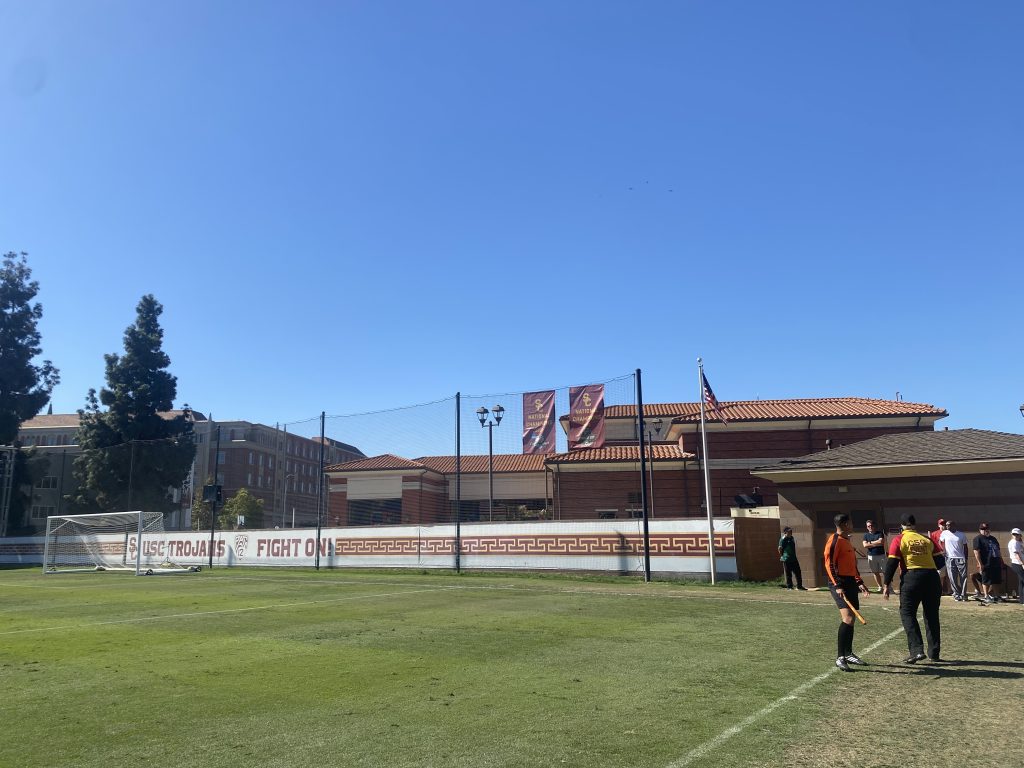
The field’s lack of lights does prevent USC from scheduling night games there. The latest start time for a lacrosse or soccer game in the past year was 3 p.m., meaning fans oftentimes face the heat and sun to watch the Trojans. Albeit less of an issue in the usually temperate Southern California, a stadium with built-in shade will be a welcome sight for fans.
Collier’s excitement for the new stadium, like others, revolves around ways in which the energy of match days will be improved.
“They’ll be able to have more fans in the stands, more night games and it’ll be a better fan environment for everyone home or away while also making a much more home-friendly environment and more hostile for the visiting team,” Collier said. “I think there’s a lot of perks to it for sure.”
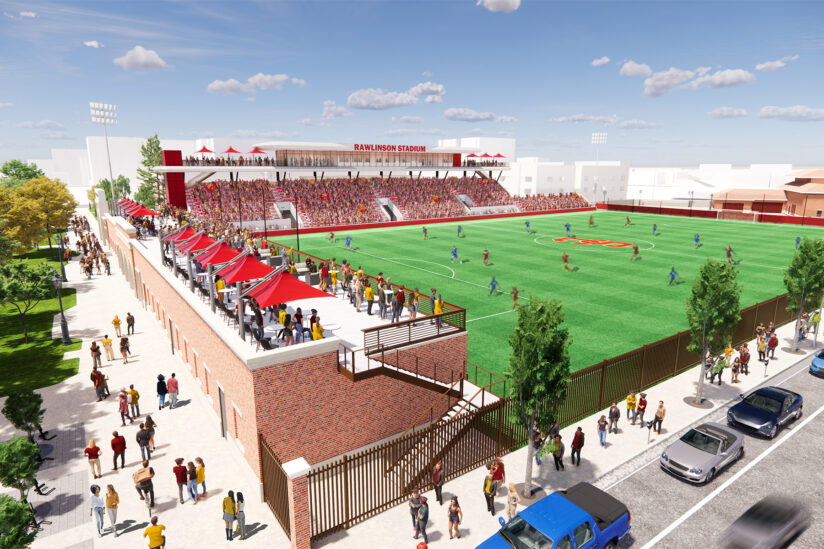
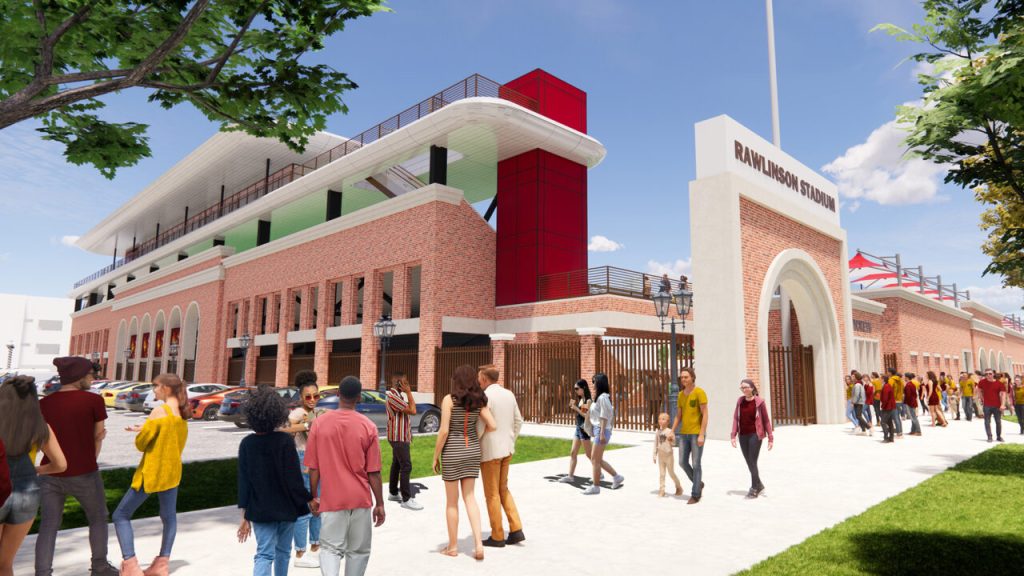
But it’s not just the fans that are affected by the project. The student athletes, after all, are the ones who use the facilities the most. They take the field each and every game, use the facilities each and every day.
As of now, women’s soccer and lacrosse players walk from the field they practice on and the locker room facilities they use on campus to the off-campus McAlister Field, about a 10-minute walk.
“We’ve kind of just gotten used to it, that every game day we walk in a line and go over to McAlister,” senior women’s lacrosse player Maggie Brown said. “Knowing that we can just go to one place, have a locker room that’s where we practice, shower, do everything, it’s going to feel like a more inclusive gameday experience.”
Brown also thinks that the centralized location would be beneficial for the families of student athletes, as they’ll have the ability to meet up after games in and around Rawlinson Stadium.
Having their own specific facilities, more than anything, stood out for players — not only in their game day routines, but their on-field performance as well.
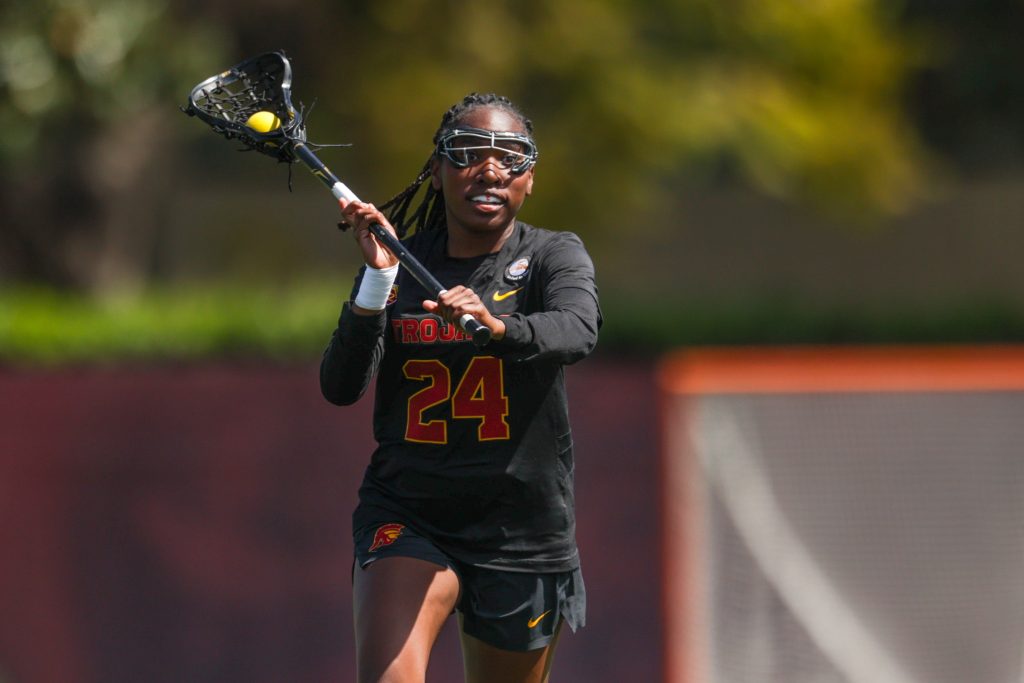
“It’s gonna be everything,” sophomore women’s lacrosse player Asjia Roberson said. “It’s a great thing when you can practice and be in a stadium all your own … It’s a whole new feel when you’re practicing on your actual game field. Intensity is better, energy is better.”
Next, why now?
From top to bottom, those around USC athletics know a new stadium is needed. This then begs the question: Why did this move happen now?
Executive Senior Associate Athletic Director and Chief Development Officer Daniel Solow has been working to make the new stadium a reality since it was merely an idea.
“I think what we had in McAlister served as a nice home but didn’t represent the commitment that we have to our lacrosse and soccer programs,” Solow said. “Being able to support those student athletes and the community that really loves those two programs and to be able to offer something more for that audience is really exciting.”
Internal and external factors played a role in the realization of the project, as the university stands on the precipice of a new era of its athletics. USC’s move to the Big Ten is now under a year away. Most of its teams will begin competition against new opponents with the beginning of the 2024-25 academic calendar. The competition will stiffen, and the University has no intention of falling behind the power curve.
Solow has been fundraising for the project for years now, working closely with the donors that made the project possible.
“Everyone’s got their own got their own motivation for support,” he said. “This is going to help us win national championships and be competitive and encourage the best and brightest student athletes in America to come to SC, and they want to be a part of that.”
Exacerbated by the new era of NIL in college athletics, monetary investment goes a long way to fielding more successful teams. That, for some donors, drives their support — especially as the women’s soccer and lacrosse programs gear up for a move to a more competitive conference.
Players, coaches and staff alike share that sentiment: the Rawlinson Stadium project will be a boost to USC’s recruiting for women’s soccer and lacrosse.
“The recruits coming in are super pumped,” Brown said. “It’s going to elevate this program completely … Saying that we have a women’s soccer and lacrosse stadium is really sweet.”
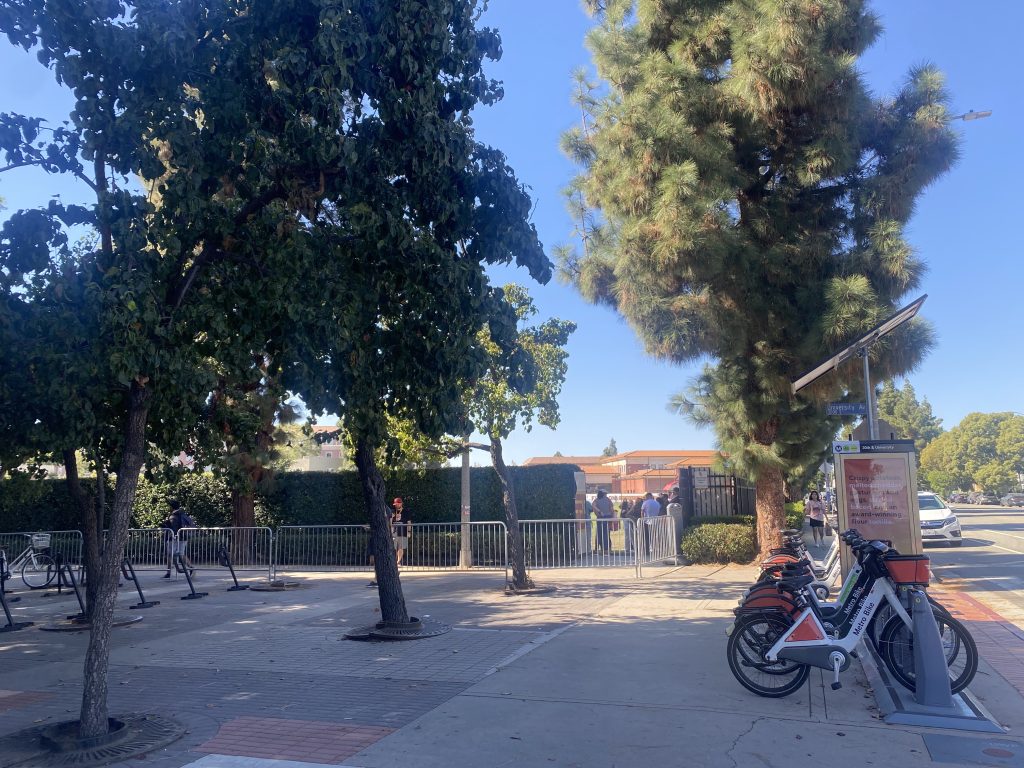
Along with the donations, USC’s leadership — namely President Carol Folt and new athletic director Jennifer Cohen — aligned in its mission to invest in women’s athletics. Cohen, who was brought in after the plan was announced, had a track record of fundraising at her previous school Washington.
Folt leaned into the milestone of the 50th anniversary of Title IX in her release, stating “USC’s commitment to women in sports is stronger than ever.”
A convenient commemoration, the two have made clear their intentions in leveling up their school’s resources for their women.
“President Folt is the champion of this project,” Solow said. “Since Jen Cohen joined the department, she’s picked up that baton and helped push it through and forward to the point that we’re going to be able to get ground broken soon and start charging forward.”
Believe it or not, it’s possible to zoom out even further. Looking a few more years down the line, Los Angeles will play host to the 2028 Olympics. And what sport is returning to the Olympics in that very year? Lacrosse.
In October, USA Lacrosse announced the sport will be a medal competition once again for the first time in over a century. Perhaps forward-thinking donors were enticed by the prospect of being attached to a stadium that could possibly host Olympic events — or at the very least grow the sport leading up to LA28.
Women’s lacrosse head coach Lindsey Munday is intrigued by the idea of Rawlinson Stadium being considered to host those games.
“USC in general has so much history,” Munday said. “To add the Olympics in there and potentially having Olympic athletes on a field that we compete on provides that history and that really unique opportunity to share a venue with people competing for gold medals.”
Finally, what’s next?
It took a perfect storm of sorts. Committed leadership, alumni donor support, an impending necessity for a competitive leap and a chance of Olympic affiliation.
The prevailing question, then, is one of sustainability. What is USC doing to ensure that the investment in two of the university’s smaller sports is one that will promote long-term growth?
Much of the modern day discourse surrounding live sporting events is centered around the fan experience. Professor Jeff Fellenzer teaches this to students in his sports business and media class in the USC Annenberg School of Communications and Journalism.
“It’s a big deal because there’s so much competition today for consumers to spend their entertainment dollar,” Fellenzer said. “The fan experience is a point of emphasis for everyone, college or pro. We’ve got to make sure we’re telling them, ‘Trust us, get on out here, you’re going have a great time.’ Then you gotta deliver it.”

By investing in the fan experience, USC is making a bet it hopes will pay off: A real stadium will attract more fans to games. The upkeep of the project will be just as important as the build itself.
But, it’s not just new seats that get people in them, it’s the product on the field. There’s no better way to attract new fans than adding a marquee player. Look no further than star freshman Juju Watkins’ impact on USC women’s basketball — this year’s home opener against Florida Gulf Coast drew more fans, 4,712, than the highest attendance of last season, 3,109, for the Trojans’ home game against UCLA.
However, unlike sports like football and basketball, where NIL deals are more abundant, smaller sports such as soccer and lacrosse might not have the same ability to secure a star on a whim.
“It’s pretty hard to imagine having someone that could really move the needle in those sports,” Fellenzer said. “I think it’s more about enhancing the fan experience, better facilities to recruit better, and then just build team success.”
Fellenzer says the best way for the two programs to create and sustain a fanbase is to take a grassroots approach. Encouraging youth teams to come to games helps create lifelong fans.
“For young girls to be able to go to soccer or lacrosse at a young age with their parents or with their teammates or club team, it gives [them] a chance to build a connection to the school,” Fellenzer said. “You plant a seed when someone’s eight, nine or 10, and now maybe they want to see if their parents will take them to another game on campus. I think that’s how you build.”
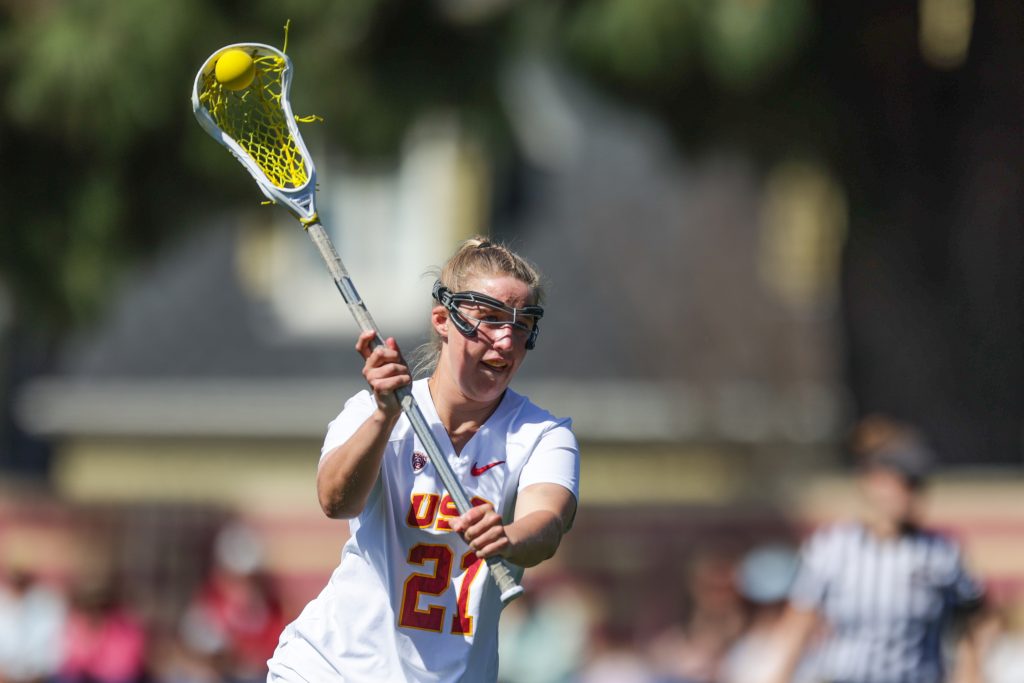
Now, the urgency starts to set in. For Brown, responsibility rests on her team’s shoulders in preparing for a new era and continuing to build a fanbase.
“[The seniors] want to leave the program out on a bang and leave it in the best possible condition it can be,” Brown said.
Roberson reinforced the same notion, a sense of confidence that both programs possess moving forward. When asked if there’s any pressure to perform and grow support, her response was definitive.
“It’ll come.”